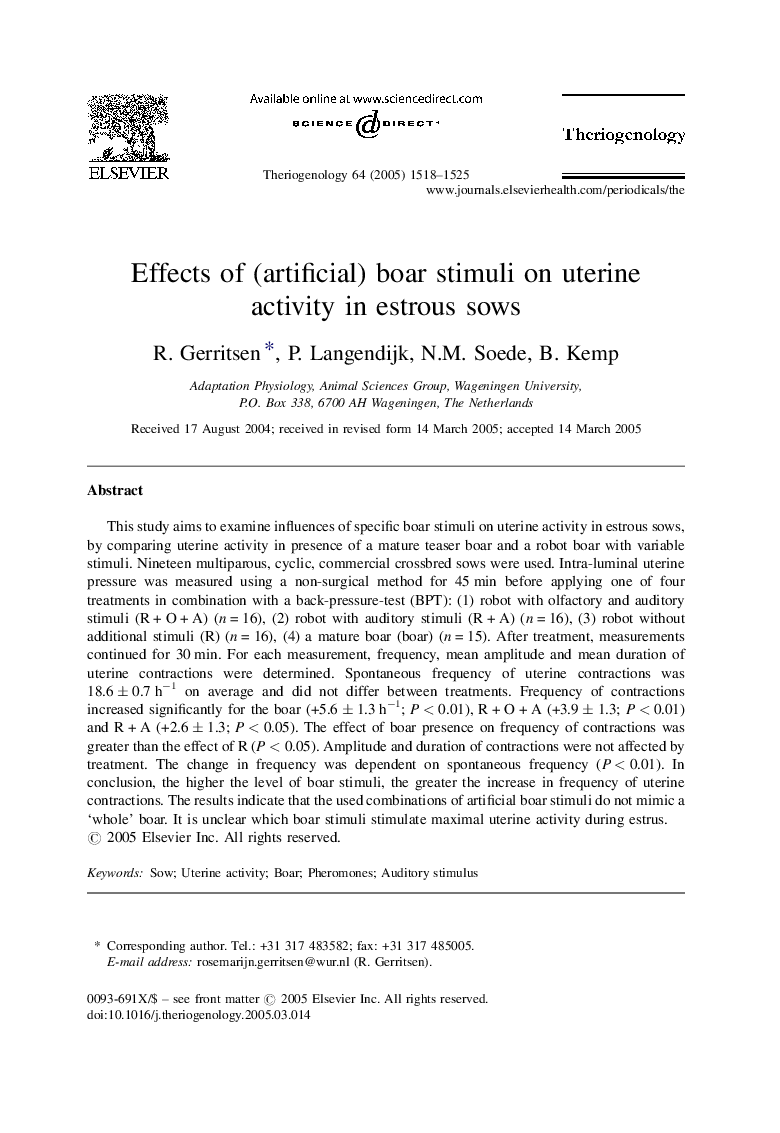| Article ID | Journal | Published Year | Pages | File Type |
|---|---|---|---|---|
| 10893879 | Theriogenology | 2005 | 8 Pages |
Abstract
This study aims to examine influences of specific boar stimuli on uterine activity in estrous sows, by comparing uterine activity in presence of a mature teaser boar and a robot boar with variable stimuli. Nineteen multiparous, cyclic, commercial crossbred sows were used. Intra-luminal uterine pressure was measured using a non-surgical method for 45 min before applying one of four treatments in combination with a back-pressure-test (BPT): (1) robot with olfactory and auditory stimuli (R + O + A) (n = 16), (2) robot with auditory stimuli (R + A) (n = 16), (3) robot without additional stimuli (R) (n = 16), (4) a mature boar (boar) (n = 15). After treatment, measurements continued for 30 min. For each measurement, frequency, mean amplitude and mean duration of uterine contractions were determined. Spontaneous frequency of uterine contractions was 18.6 ± 0.7 hâ1 on average and did not differ between treatments. Frequency of contractions increased significantly for the boar (+5.6 ± 1.3 hâ1; P < 0.01), R + O + A (+3.9 ± 1.3; P < 0.01) and R + A (+2.6 ± 1.3; P < 0.05). The effect of boar presence on frequency of contractions was greater than the effect of R (P < 0.05). Amplitude and duration of contractions were not affected by treatment. The change in frequency was dependent on spontaneous frequency (P < 0.01). In conclusion, the higher the level of boar stimuli, the greater the increase in frequency of uterine contractions. The results indicate that the used combinations of artificial boar stimuli do not mimic a 'whole' boar. It is unclear which boar stimuli stimulate maximal uterine activity during estrus.
Related Topics
Life Sciences
Agricultural and Biological Sciences
Animal Science and Zoology
Authors
R. Gerritsen, P. Langendijk, N.M. Soede, B. Kemp,
